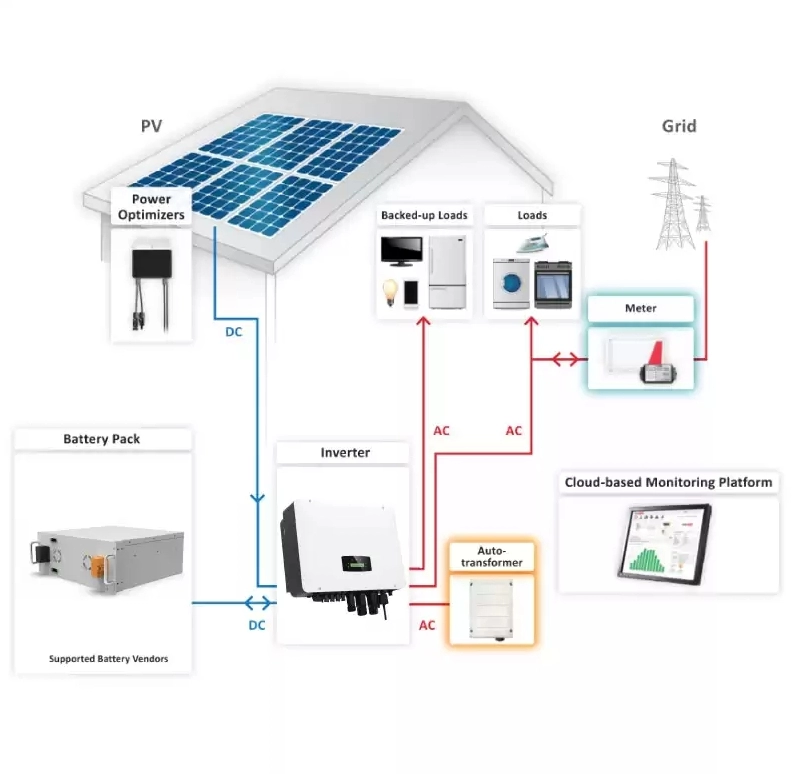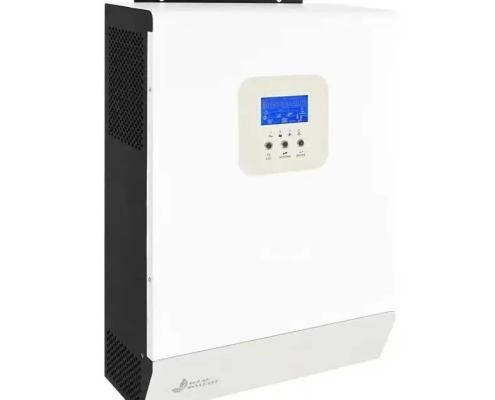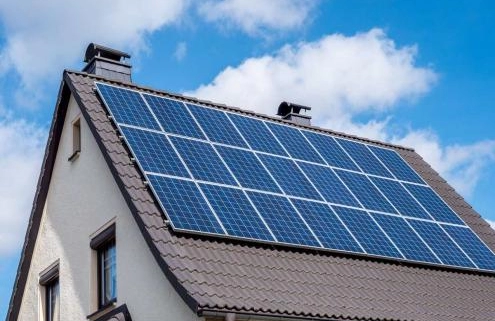How to balance solar, batteries, and the grid in a hybrid solar system?
The hybrid solar system combines PV panels, battery storage, and grid connection to deliver reliable and efficient power around the clock. When the sun is shining, the system provides power first to the onsite loads, then to the battery, and finally to the grid. Conversely, at night or during extended periods of overcast, the system draws power from the battery and, if necessary, from the grid to meet demand. Balancing these three elements, solar generation, battery storage, and grid connection requires careful design and powerful hardware.
Considering Solar Generation and Load Matching for a Hybrid Solar System
In a hybrid solar system, onsite solar generation is always the preferred resource to meet load demand. This “solar first” approach minimizes reliance on the grid and maximizes the use of free, zero-emission energy. BARANA’s hybrid solar solutions utilize MPPT inverters to extract maximum power from PV panels, even in low-light or partially shaded conditions. In addition, real-time load sensing ensures that any excess sunlight is automatically used to charge the battery bank rather than being exported at a lower feed-in tariff. At the same time, critical loads such as refrigeration, lighting, and HVAC systems will be prioritized to ensure uninterrupted operation. As a result, you can reduce energy costs and greenhouse gas emissions while maximizing the value of your solar array.

Determine battery size for energy conversion and emergency backup
Battery capacity in a hybrid solar system has two main functions: time-shifting solar power and providing backup power during power outages. To determine the right capacity for you, we begin by analyzing your average daily electricity use, peak load, and required battery life. For example, a small commercial facility with a peak load of 20 kWh and a requirement for 12 hours of backup power needs at least 240 kWh of available energy storage plus a 20% safety margin, totaling approximately 288 kWh. LiFePO₄ batteries are often used in hybrid solar solutions because they have a long cycle life, a low self-discharge rate, and are stable over a wide range of temperatures. In combination with an intelligent charge controller, which manages the state of charge, depth of discharge, and thermal state, the hybrid solar system’s batteries remain healthy, ensuring reliable energy conversion and emergency backup power when needed.

Intelligent Control Logic and Grid Interaction of Hybrid Solar System
The control logic of a hybrid solar system makes a decision every second on whether to use solar power, draw power from the battery, or import power from the grid. BARANA’s hybrid solar solution utilizes advanced energy management software that continuously monitors PV output, battery state of charge (SoC), real-time grid electricity prices, and user-defined priorities. During high-price periods, the system discharges battery power to minimize grid purchases; during low-price or off-peak periods, the system charges with excess solar power or cheap grid power. Additionally, participating in demand response programs enables the system to temporarily reduce its load or export stored power, earning additional revenue while supporting grid stability. This sophisticated scheduling mechanism ensures that your hybrid solar system operates at optimal economic efficiency without compromising reliability.
Integrating Weather and Load Forecasting
Weather variability poses a significant challenge to maintaining the balance of a hybrid solar system. To address this challenge, we integrate short-term solar irradiance forecasts and load forecasts using intelligence-driven algorithms. By analyzing historical generation and consumption patterns, as well as real-time weather data, the system can dynamically adjust charging and discharging schedules. For example, suppose the forecast predicts cloud cover for the afternoon. In that case, the controller will pre-charge the battery in the morning when there is plenty of sunshine to ensure sufficient power reserves. Conversely, on consecutive sunny days, it may limit battery cycling to maintain battery health. This proactive approach significantly improves energy production, extends component life, and ensures uninterrupted power supply even in rapidly changing weather conditions.

Ensure reliability through redundancy and maintenance.
The reliability of hybrid solar systems depends in part on hardware redundancy and careful maintenance. Our designs typically include dual inverters, parallel battery packs, and backup communication paths to ensure that single-point failures do not affect the entire system. At the same time, we advise our users to perform quarterly inspections to check the integrity of PV modules, the thermal performance of inverters, battery health indicators, and grid interconnection compliance. Through the remote monitoring platform, the system’s health status is tracked in real-time, triggering alarms when abnormal conditions, such as inverter derating or atypical SoC drift, occur. By combining redundancy with proactive maintenance protocols, you can ensure that your hybrid solar system can provide uninterrupted power even during component failures or extreme weather events.
Balancing solar energy, batteries and the grid brings warmer electricity.
To balance solar energy, batteries, and the grid in a hybrid solar system, we combine intelligent control logic, precise scale configuration, weather forecasting, hardware redundancy, and proactive maintenance to provide scalable designs for residential, commercial, and industrial applications. By prioritizing onsite solar energy, optimizing battery energy storage, dynamically interacting with the grid, and leveraging predictive algorithms, you can maximize the utilization of renewable energy, reduce utility costs, and improve the user experience.



